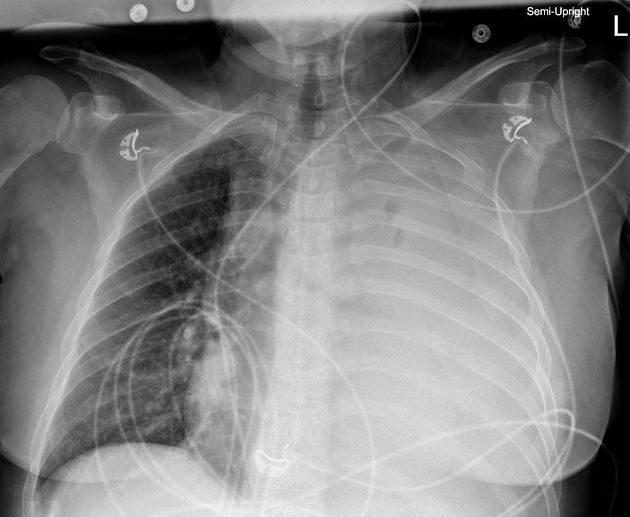Hepatic hydrothorax is an uncommon manifestation of cirrhosis with ascites. It is one of the pulmonary complications of cirrhosis with portal hypertension.
It is characterized by the formation of pleural effusions usually greater than 500 mL in patients with portal hypertension without any other underlying primary cardiopulmonary cause 2.
On this page:
Epidemiology
Its estimated prevalence among cirrhotic patients is ~5-10% 5.
Diagnosis
The diagnosis is established clinically by finding a serous transudate on pleural fluid analysis, and is confirmed on Tc-99m sulfur colloid imaging demonstrating communication between the peritoneal and pleural spaces.
Pathology
It is thought to occur when ascitic fluid moves through diaphragmatic defects that have been opened by increased peritoneal pressure.
Location
right: 73-85%
left: 13-17%
bilateral: 2-10%
Radiographic features
Plain radiograph
Plain radiograph demonstrates a large, usually unilateral pleural effusion.
Nuclear medicine
A Tc-99m sulfur colloid study can be performed by injecting the radiotracer into the peritoneal cavity, rotating the patient from side to side, and imaging at 30-minute intervals for 4-6 hours. Scintigraphy will show passage of the radiotracer from the peritoneal cavity into the pleural space 6.
Treatment and prognosis
Complications
The ascitic fluid may be infected, and subsequent spontaneous bacterial pleuritis (SBPL) can develop.





 Unable to process the form. Check for errors and try again.
Unable to process the form. Check for errors and try again.